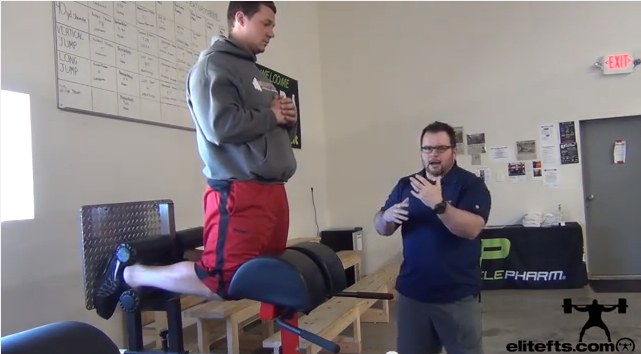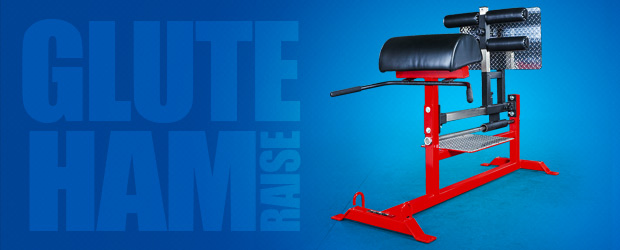
Elitefts™ Director of Education Mark Watts along with Showtime Strength and Performance Owner Nick Showman demonstrates how to adjust the Glute-Ham Raise Bench to optimize the training effect for athletes at any level.
The glute-ham raise is one of the most beneficial movements athletes and lifters to enhance performance and reduce the chance of injury. Some of the benefits of the glute-ham raise include but are not limited to:
Enhancement of Linear Speed
The glute-ham raise exercise activates the posterior chain muscular in a similar firing pattern as sprinting and jumping.
Vertical Jump Improvement
Because the glute-ham raise is a closed-chain movement, it develops the ability of the athlete to produce force into the ground when doing so against the foot plate of the GHR.
Reduction in Non-Contact Lower Extremity Injuries
The glute-ham raise is one of the most efficient movements to address muscular imbalances between the posterior chain with the quads and hip flexors. Minimizing this imbalance can reduce the chance of hamstring strains and knee injuries.
Improvement in Squat Variations and Pulls
Increasing the strength of the glutes and hamstrings can allow the lifter to compensate less and assist in maintaining proper posture and movement patterns.
Adjusting the Set-up
The Pad and Foot Plate
For beginners, adjust the distance from the thigh pad to the foot plate so that the athletes' knees can "fall through" so that the mid to upper thighs rest on the pads.
As the athlete becomes more proficient at the movement and strength increases, the foot plate can be adjusted closer so the knees are actually resting into the side of the pad. This will increase the lever are and make the movement more difficult. This is another reason the exclusive angled pad design is such a beneficial feature of the elitefts GHRs.
Your entire foot should be against the back plate. This is crucial to proper execution of the movement. Your shin should be resting on the bottom leg piece. There is no need to contact the top piece with your calf.
The Foot Rests
The height of the foot rests can have a considerable impact on the angles of the joints and the movement itself. Generally speaking, the higher the foot rests, the more difficult the movement becomes. Having a progression where the foot rests are raised once the athletes becomes more efficient at the movement can become a natural mechanical progressive overload throughout the training cycle.
Be aware when the foot rests are at the lowest position, the movement will become easier, but there will also be more pressure on the thighs due to the discrepancy of shin height and the top of the pad when the shin is parallel to the floor. This discomfort can discourage young inexperienced athletes from this exercise.
The back leg adjustment should be as low as possible to start with. Raising the back apparatus will make the exercise more difficult, but it can also alleviate quad pain if needed.
General Tips for the Performing the Glute-Ham Raise
Coaching The Movement
With the Eccentric portion, concentrate on leading with your hips on the way down until your knees are locked. You should never bend at the waist at any point
Be aware when performing a back raise and GHR combo, this added momentum plus the tendency of extending the back to initiate the movement defeats the purpose of the lift.
During the concentric portion, tuck your chin (to avoid leading with hyper-extension), snap your head back and push your toes against the back plate. If you are set up correctly, your ankle will be close to (not exactly) a dorsi-flexed position. This movement, if done correctly, activates a similar firing sequence of motor units as sprinting.
Common Mistakes
1. Pushing the hips back.
2. Letting the knees drop.
3. Hyperextending the back.









